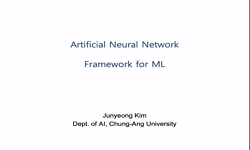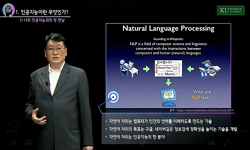The amount of radioactive waste is expected to dramatically increase with decommissioningof nuclear power plants such as Kori-1, the first nuclear power plant in South Korea. Accuratenuclide analysis is necessary to manage the radioactive wastes safel...
http://chineseinput.net/에서 pinyin(병음)방식으로 중국어를 변환할 수 있습니다.
변환된 중국어를 복사하여 사용하시면 됩니다.
- 中文 을 입력하시려면 zhongwen을 입력하시고 space를누르시면됩니다.
- 北京 을 입력하시려면 beijing을 입력하시고 space를 누르시면 됩니다.

방사성폐기물 핵종분석 검증용 이상 탐지를 위한 인공지능 기반알고리즘 개발 = Development of an Anomaly Detection Algorithm for Verification of Radionuclide Analysis Based on Artificial Intelligence in Radioactive Wastes
한글로보기https://www.riss.kr/link?id=A108547775
- 저자
- 발행기관
- 학술지명
- 권호사항
-
발행연도
2023
-
작성언어
Korean
- 주제어
-
등재정보
KCI등재
-
자료형태
학술저널
-
수록면
19-32(14쪽)
- DOI식별코드
- 제공처
-
0
상세조회 -
0
다운로드
부가정보
다국어 초록 (Multilingual Abstract)
The amount of radioactive waste is expected to dramatically increase with decommissioningof nuclear power plants such as Kori-1, the first nuclear power plant in South Korea. Accuratenuclide analysis is necessary to manage the radioactive wastes safely, but research on verification ofradionuclide analysis has yet to be well established. This study aimed to develop the technology thatcan verify the results of radionuclide analysis based on artificial intelligence. In this study, we proposean anomaly detection algorithm for inspecting the analysis error of radionuclide. We used the datafrom ‘Updated Scaling Factors in Low-Level Radwaste’ (NP-5077) published by EPRI (Electric PowerResearch Institute), and resampling was performed using SMOTE (Synthetic Minority OversamplingTechnique) algorithm to augment data. 149,676 augmented data with SMOTE algorithm was used totrain the artificial neural networks (classification and anomaly detection networks). 324 NP-5077 reportdata verified the performance of networks. The anomaly detection algorithm of radionuclide analysiswas divided into two modules that detect a case where radioactive waste was incorrectly classified ordiscriminate an abnormal data such as loss of data or incorrectly written data. The classification networkwas constructed using the fully connected layer, and the anomaly detection network was composedof the encoder and decoder. The latter was operated by loading the latent vector from the end layer ofthe classification network. This study conducted exploratory data analysis (i.e., statistics, histogram, correlation, covariance, PCA, k-mean clustering, DBSCAN). As a result of analyzing the data, it iscomplicated to distinguish the type of radioactive waste because data distribution overlapped each other.
In spite of these complexities, our algorithm based on deep learning can distinguish abnormal data fromnormal data. Radionuclide analysis was verified using our anomaly detection algorithm, and meaningfulresults were obtained.
동일학술지(권/호) 다른 논문
-
감마핵종 In-Situ 측정 연구 동향 분석 및 방사능 측정 효율 민감도 평가
- (사)한국방사선산업학회
- 라현준
- 2023
- KCI등재
-
방사성 금속폐기물의 방사능 오염도 측정 및 오염 여부에 따른 자동 분류시스템 개념설계 및 개발
- (사)한국방사선산업학회
- 권순범
- 2023
- KCI등재
-
KBS-3 방식 고준위방폐물 심층처분장 FEP 분석을 통한 국내 사용후핵연료심층처분시설 방사선학적 안전성 평가용 지권영역 주요 프로세스 항목 및상대적 중요도 도출
- (사)한국방사선산업학회
- 김석훈
- 2023
- KCI등재
-
국내 KBS-3 방식 고준위방사성폐기물 심층처분시설 방사선학적 안전성 평가대상 방사성핵종 목록 선정개념(안) 제언
- (사)한국방사선산업학회
- 김석훈
- 2023
- KCI등재





 KCI
KCI






